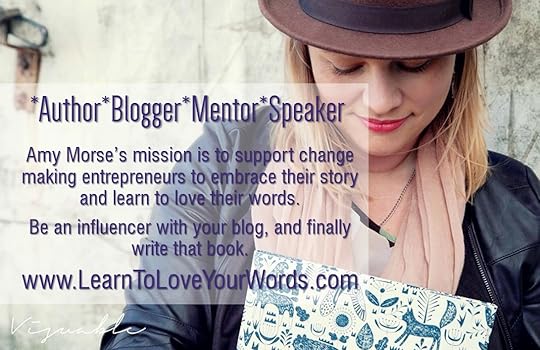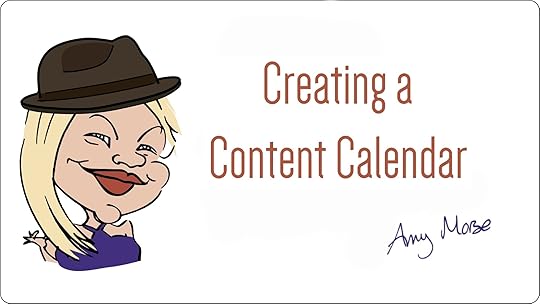Amy C. Fitzjohn's Blog, page 23
June 12, 2018
Blog With Style

Does your blog have a recognisable style?
Does it fit with the authentic message of your business?
One of the greatest compliments I received recently was meeting someone at a networking event. She came up to me, gave me a big hug, saying, “So lovely to see you, Amy. How are you?”
In my head, I was saying, ‘Who are you? Think, Amy, Think!’ (I’m usually pretty good with faces).
She stepped back, looking rueful, “Oh, I’m so sorry! We’ve never actually met! We’ve talked on Facebook, I’ve seen a couple of your webinars and I always read your blogs. I feel like I know you. I like your style!”

When a perfect stranger feels like they know you enough to give you a hug when they first meet you in real life, you know you’ve cracked it!
I’ve been blogging consistently for more than five years now, and I’m not going to mislead you, it takes time to establish yourself enough through your writing that people recognise you, your style, and to really feel like they know you.
Your Social Media Style
When you share your content on Social Media, you think you’ve written something really profound and fascinating and barely anyone engages, then you make some inane, off the cuff remark on an update and get 200 likes! Go figure?
Variety
Ultimately, all that variety of content, across different networks, in different places and a good quality, consistent stream of blogs all adds up to build that bigger picture of who you are and why you run the business you do.
In my most recent webinar, I talked about 3 things you could start doing today to build that recognisable, likeable and authentic digital presence.
Ultimately, whatever niche you occupy, whatever USP you think you have, the only thing truly unique in your business is YOU.
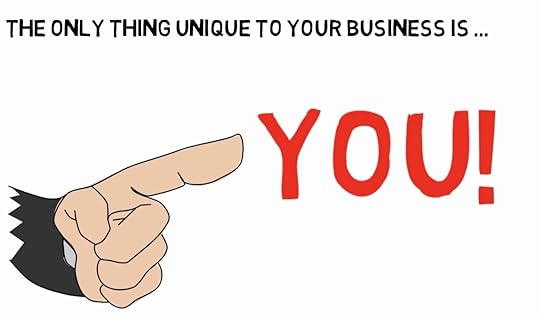
It’s All About You
Your readers want to hear from YOU.
They want to get to know YOU.
Each time you write a blog, you are adding another chapter to the story of your business, the story of YOU. That’s when people will start to like your style, and eventually to trust you enough to part with their cash, or recommend you.

Watch the summary video here:
Tips From The video
The three tips covered in the video are:
1) Make use of variety
Have a mixture of written, video, audio, visual content. Mix it up a bit. Doing this not only appeals to the different learning styles of your audience but it also helps you realise what your audience want from you, how they want it and also what works for you.
2) Voice record or dictate your content
By dictating your words, or reading them out, you quite literally put your voice into your writing. Your writing will be much more conversational, which is far more appropriate in digital marketing. Readers will recognise you from your writing.

3) Have simple style guidelines for your blog
Create a documented guideline of how your blog will be presented. Go into details with it. What form of words will you write in? What font will you use for the paragraph, the headings, the subheadings? Are there phrases you use a lot? Are there conventions that you will stick to for consistency? (i.e. would you write 1 to 1 – 121 or one to one? Is it OK or okay?) Your brand colours? Size and how many images will there be? Type of images you use?
It’s always better to use your own images where possible as this all adds up to seamlessly presenting a consistent, unified and recognisable brand.
This is useful for your own reference as a checklist, but you can also incorporate it into submission guidelines if you invite guest contributors, or if you have more than one person regularly writing on your blog.
What ONE thing will you do to find your voice and style in your blogs?
For instant updates when I publish a new blog post, Follow me on Bloglovin’
For extra goodies and exclusive new information, join my mailing list HERE.
I only send a newsletter monthly, so I won’t spam you, I promise!
The post Blog With Style appeared first on Amy Morse.
June 8, 2018
5 Blogging Myths & How to Beat Them
What’s stopping you from blogging in your business, right now? Is it one of these commonly held 5 myths?
Or is there an FAQ that’s holding you back?
As a blogging mentor, working with businesses, I hear these misconceptions all the time. They knock people’s confidence, they are overwhelmed and that instinct to freeze or ignore the issue stops them from making any progress. With a little help and a sensible and managemenle plan, you can find your creative blogging muse and channel them to grow your influence and grow your business through blogging.
Here are 5 of the most common myths:
Myth 1
“No One Reads Blogs”
Busted:
There are 329 million blog views every day.
We all read blogs, often without even realsing it.
Have you ever Googled a question that you needed an answer to?
If it lead you to an article you then read, the chances are that was a blog.
Blogs are just written content, and the internet is an impossibly enormous repository of content.
Content IS the World Wide Web and Google feeds on content, in particular, it feeds on words. You type words into a search query and Google finds those words in content and returns an appropriate result.

Myth 2
“I have to blog every day”
Busted:
You can write every day if you want (but you don’t have to) – and probably do in the form of Social Media updates (they are really just micro-blogs). But, for your wesbite to be noticed by Google and for readers to see that you are current and relevant, once a month is enough.
Tip: Aim for once a month.
Congratulate yourself on your one blog post.
However, as soon as you get used to writing regualrly, you’ll come up with new ideas and will want to write more to capture them. By developing healthy writing habits, you’ll be blogging 2 or 3 times a month without even realising it.

Myth 3
“I’ve got nothing to say”
Busted:
That’s absolute nonesesne! You run a business, of course you have soemthign to say!
Write about what you love. Tell the story behind the story. Share the benefits of your business. Share your passion.
Focus on writing about why you do what you do, not ‘what’ you do. No one cares about the thing itself, they care about the why. They care about the benefits and want to know what’s in it for them.

Myth 4
“I have to write a lot”
Busted:
The best writing says a lot with few words. We are all time poor and impatient these days.
You want to write enough on a blog to keep it short, sanppy and to the point, but include enough to give it some depth and value. However, you don’t want to go on too much and write thousands of words. They key is to find a hapoy balance.
Aim for between 500 and 1,200 words. With the occasional long, well researched and in depth post and the occasional super quick update with lots of pictures.
There are no hard and fast rules so keep it practical and manageable for you. It is, of course, determined by your audience. Monitor which poasts are most popular – the short ones or the long ones – and do more of what works well for your audeince.

Myth 5
“I don’t have time”
Busted:
We can all say this about everything, but the fact is we all have 24 hours in the day and it’s up to us to prioritse and manage that time. DOnlt let yourself off the hook so easily.
Make time!
Priortise writing one blog a month – we can all find a couple of hours. But better still, allocated blocks of time in your diary, little and often, for writing then show up with a positive attiude and get on with it!
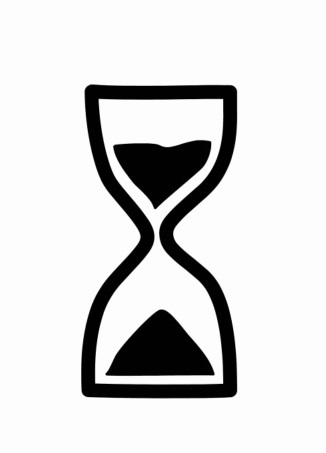
I’ve spoken at several diffferent events on these 5 myths. Here are the slides I use in my talk.
Veiw Blogging Myths Slides
Five Blogging Myths (From a Talk) from Amy Morse
For more on how to make blogging work for your business, get the book HERE
If you’re struggling to get over these, or any other barriers to find your blogging mojo, book in for a FREE 30 minute Clarity Session and we can work through your challenges together.
For instant updates when I publish a new blog post, Follow me on Bloglovin’
For extra goodies and exclusive new information, join my mailing list HERE.
I only send a newsletter monthly so I won’t spam you, I promise!
The post 5 Blogging Myths & How to Beat Them appeared first on Amy Morse.
June 5, 2018
The Single Best Tip for Blogging
I started my first blog in 2013 as a vehicle to get my first novel off the ground.
Since then, I’ve build a business around helping entreprenerus to discover the power in their own words, my top tip to grow your influence: build a blog and have a book.
I’ve shared many blogs on blogging tips from the lessons I’ve learned over the years, published a book on Blogging for Business and have online workshops availiable with my Skills Sessions.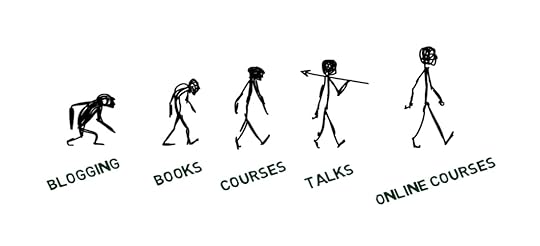
There’s plenty of advice on blogging online, but searching for it can be overwhelming.

(Sometimes, it’s easier to pay for it for save time and energy!)
There are a few big websites that you will always find at the top of Google of you search for bog advice, but personally, I like to work with people, not faceless websites, staffed by hundreds of people, churning out copy to feed the internet treadmill!
I’ve been following the career of rising inlfuencer, Marc Guberti for some time now, from some early guest blogs we swapped to getting involved in his receent content summit.
I follow his blogs and this one popped up on my inbox:
http://marcguberti.com/2013/11/100-amazing-blogging-tips/
100 tips is a big chunk, and runs the risk of adding more tasks to our ever expanding to do list. In fact, there’s a few things here that I need to do more of myself!
Is There One Tip to prioritise?
I’m going to take the first tip and expand on it, as this is the single best tip I can offer for anyone blogging for their business…
Update your blog consistently. People won’t forget about you.
If content is King, Consistency is Queen!
On his blog, Marc recommends blogging daily. Personally, I think this is too much, unless the blog itself is your business. But if you are running a business and the blog is one of your vehicles for marketing, ideally, once a week is a good amount. However, if you’re new to blogging whatever you do, don’t aim for weekly blogging from day one. I wrote recently about why weekly blogging is bad advice for new bloggers.
So how do you stay consistent with your blogs?
Plan Ahead
Where are you going with your business? What plans, goals and expectations do you have? What expectations do your customers have of you?
Be strategic
How does your blog fit into the overall marketing strategy for your business? Are you using and re-using that content? Is it adding value? How is it providing solutions for your customers? How does it link to the products and services you offer?
Map it out
What’s your capacity? What are your plans for the next quarter? How often, realistically, can you create new content?
Step by step
Overcoming overwhelm can be a challenge.
Looking at your maetrking as a whole.
Seeing that To Do list growing.
Finding out about all these things you ‘should’ be doing. You can’t possibly do it all at once, so once you’ve mapped out what you ‘need’ to do and the order in which to do it, you can then start planing in the ‘should’ do’s – although, personally, I’d take that word ‘should’ and replace it with ‘Could’ to help get you over that first hurdle.
To know what to blog about and when, get my FREE online ‘Creating a Content Calendar’ workshop HERE
Watch the video, do the exercises then complete the spreadsheet.
Spending time doing this now will get you on the right track with your blog and help you to build it into your regular routine.
If you get stuck or could use a little mentoring along the way, talk to me about my FREE 30 minute Clarity Sessions.
Happy blogging!
For instant updates when I publish a new blog post, Follow me on Bloglovin’
For extra goodies and exclusive new information, join my mailing list HERE.
I only send a newsletter monthly so I won’t spam you, I promise!
The post The Single Best Tip for Blogging appeared first on Amy Morse.
May 31, 2018
4 Steps to Start a Healthy Writing Habit
Writing is hard…
Is it?
Anything is hard if you’re not used to it. Getting used to something is all about making it into a habit.
We all have 24 hours in a day and it’s up to us to decide how we use that time.
When you work for yourself, there’s no-one there to do the organising for you, the buck stops with you.
It’s up to you to practice healthy habits and rituals in your business week to get stuff done!
If “Start Blogging” is on your To Do list, the chances are, the reason it’s not happening is that you just haven’t found the time for it.

Reality check: “I don’t have time” is the excuse we use for EVERYTHING!
Everything that is not apriority for us, anyway. We all have busy lives, I’m afraid you are not special in that regard (sorry)!
Don’t let yourself off the hook so easily!
The Solution?
Make it a priority then make the time.
Get your diary out, right now (go on, do it) and plan in at least one hour-long slot a week for writing time, from this week onwards…
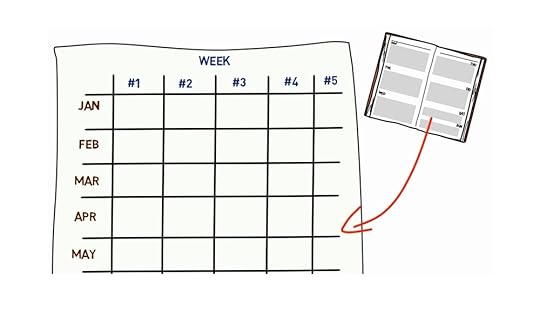
Now you have the time in your diary, here’s what to do with it…
4 Steps to Start a Writing Habit:
1) Create the right environment

Find somewhere sensible to work. In the middle of room full of noisy children is not it!
Experiment with locations.
You need somewhere warm enough, comfortable, quiet(ish) and with the right resources.
For me, those resources are my laptop, and a plug to charge it from (just in case). Depending on what I’m writing, I can manage without Wifi (I can always draft blogs in Word) – and a good cup of coffee.
Either that, or a sunny spot, the right notebooks and a pencil case with a selection of pencils and pens (and a good coffee).
I like to work from coffee shops. But sometimes I feel like I can’t stay there for more than a couple of hours without outstaying my welcome, so a hotel lobby is a good option for a longer term writing camp/writing retreat.
2) Experiment with typing or writing

I often find, physically writing enhances my creativity. There’s something about feeling the pen scratching on the page and seeing the spidery trails of ink form into words.
Notebooks are also location independent. You can write anywhere – in the garden in the park, on a beach…
(I have to confess, I do have a stationery habit, so I am a little biased!)
Books never run out of battery – although pens do run out of ink, so make sure you have plenty of spares!
Once you’ve handwritten something you can quickly transcribe it to the computer by dictating it.
If you write directly to your screen, use a proper keyboard! And, don’t allow yourself to be distracted.
Get into the habit of shutting your email so it doesn’t bleep at you and avoid the time suck that is Social Media!
Sometimes it’s better to work without Wifi so you are not tempted to procrastinate online. If you need to do research, make a note of what you need to find out and do it later, then keep writing something else.
3) Allow time
Don’t overcrowd your diary. If you have only allowed an hour then booked in something else immediately after, you may regret that if you get into a flow. You can write in shorter chunks than an hour, and sometimes this can focus the mind and as a regular habit can be positive, but personally, I like to have some flexibility in my diary.
4. Show up with a positive attitude

If you show up telling yourself you ‘hate writng’, ‘you can’t do it’, ‘you’ve got nothing to say’ etc. etc. you’d rarely disappoint yourself.
Plan in the time, then learn to look forward to it.
Tell yourself that this is your time to think, create, express yourself, say what’s on your mind and get things out of your system. No-one needs to see your writing until you are ready to show them. That’s what passwords are for!
Don’t put pressure on yourself to write brilliantly either, the first draft of anything is supposed to be crap.
The point is to get the ideas out of your head and tell the story to yourself at first, then work on it later.
Some days, the words will flow, some days they won’t. That’s OK. The important thing is not to let the fear of the words not flowing from stopping you from doing it. If you really can’t write in your writing time, do writing related activities instead – like: plan your writing. Capture ideas. Take a walk and have some ‘thinking time’, it all adds up.
Do this, regularly, consistently, several times a week and it will become a habit.
And if you need someone to hold you accountable, shout!
Book online for a FREE 30 minute Clarity Session and let’s get you started on the blogging journey for your business.
For instant updates when I publish a new blog post, Follow me on Bloglovin’
For extra goodies and exclusive new information, join my mailing list HERE.
I only send a newsletter monthly, so I won’t spam you, I promise!
The post 4 Steps to Start a Healthy Writing Habit appeared first on Amy Morse.
May 30, 2018
Waiting To Land Your First Paid Gig – A Guest Post
 As I pass the milestone of my third year in business this month, this guest post is a timely reminder of the early days of trying to get paid from your business.
As I pass the milestone of my third year in business this month, this guest post is a timely reminder of the early days of trying to get paid from your business.

In the past three years, I’ve learned it will always be up and down when you are freelancing.
You get to the point where you just have to trust in the process and ride out the lows, knowing from experience, that if you keep doing what you’re doing, if you continue to try new things and remain open to opportunities, you’ll get back to those highs, and be better prepared to ride out the next low.
It’s a cliche for a reason, it really can be like a rollercoaster – in motivation, confidence and getting paid!
When Maxine reached out, sharing the beginning of her business journey, I was happy to host her as a guest to inspire and motivate other entrepreneurs on this bumpy road to self-reliance through enterperise.
Over to Max for her fab guest blog…
WAITING TO LAND YOUR FIRST PAID GIG
Since deciding to enter the realm of freelance writing, it has been a long monotonous road trying to land my first ‘paid’ gig.
Constantly pitching for new clients.
The endless self-selling.
People offering you $1 for 5000 words (true story).
It’s easy to become demoralized and lose motivation, and I’m no self-help guru, but I thought I would share some of the methods I have been using to get me through this period.
LISTS, FOCUS, BITE-SIZED CHUNKS
It’s so easy to become overwhelmed with all the information that is projectile spewed at you as soon as your laptop is opened.
Like a lot of people I know, I have a bad habit of opening a thousand things at once, flitting between them all and not really getting much done.
To alleviate this, I have started to spread my tasks out over the week in small manageable ‘bite-sized chunks’. Two or three things a night, generally two fluffy tasks and one annoyingly complicated one.
Once these tasks are all done, I can mentally ‘high-five’ myself before deciding whether to continue on with more tasks, or simply ‘ride the wave’ of that evening’s victory.
This is a simple, easy way to feel a sense of achievement, and there’s nothing quite like planting a great big fat tick next to one of your list items!
DON’T PANIC!!!!!!
This is mostly a message for me.
TAKE TIME OUT
This is where the word ‘hypocrisy’ springs to mind, because although I am suggesting this, and fully aware that this is a great piece of advice, I am far from following it.
Why? Because I am determined to get to a position of being able to freelance full-time before I have to return to work from maternity leave.
Plus, I have 2 small children under the age of 5, if I sit longer than 40 seconds, I get mistaken for a climbing frame.
So …take a break, structure them if you can…PAH HA HA HA!!! *Continues writing till 1 am whilst hysterically laughing* (Please see blog on ‘Sleep Deprivation’).
CREATE A WEB PAGE AND SEND IT OUT TO THE UNIVERSE
I use a FREE web builder (Wix). The most I can manage is drag and drop, and this is perfect for those of us that are technologically challenged.
I have noticed several debates on whether a web page is even necessary, which I guess is a personal preference. For me, a web page has been useful to collate the projects I have previously worked on, or are currently working on. It’s also a useful tool in pitching, as I reference my page when contacting potential clients so they are able to see samples of my work.
If you opt for a website, once it’s completed, release that thing of beauty to the stratosphere! And by stratosphere, I mean, any piece of social media you are signed up to (and beyond).
LinkedIn is how I came into contact with, ‘Amazon Best Selling fiction author’ and business advisor Amy Morse. She kindly gave me some really useful advice, and I have been lucky enough to be offered the chance to guest blog on her page.
So here I am!
NETWORK AND PUT YOURSELF OUT THERE
Currently, my networking has taken place via social media. But I will be looking to network with people in person. I just need to remember how to string a sentence together without cutting short to yell things like, ‘DON’T TRY TO SWEEP YOUR SISTER INTO THE STORAGE CUPBOARD!’ …baby steps…
Amy was kind enough to recommend some networking groups, for example, ‘Ladies Who Latte’. One that I have been meaning to attend is ‘Freelance Mums’, as it allows attendees to bring their children along.
MAKE A PITCH SHEET
With the constant pitching, it can be easy to forget who you have sent what to. Also, during my pregnancy I pretty much lost my faculties, therefore I use an excel sheet to keep track, which is useful to remind me to follow up too.
HANDLING REJECTION
The beauty of long term ‘baby brain’ is …I barely remember a thing. Therefore, every time I have been rejected, *poof* it’s gone.
For those of you that don’t have this blessing/curse, a thick skin is imperative. It appears that rejections are part of the gig, and what I have learnt is that it will generally be in the form of a ‘silent rejection’ where no one responds back.

KEEP REFINING YOUR SKILLS BY WRITING GUEST BLOGS
As I have already stated, pitching can be long and monotonous. To break things up, I have found practising different writing styles useful. These will then be added to my web page as sample pieces. For example, I am currently working up a sample press release for a pretend ‘grandioso (!) shop opening’ for my online fabric store,‘The Fabric Merchant’.
CHALLENGE THAT ANNOYING VOICE IN YOUR HEAD
‘Get a salaried job.’
‘Time is running out before you have to return to work!’
‘How will you manage your time?’
‘You can’t do this…’
These are some of the annoying things that that silly little voice in my head often spouts when I get another ‘silent rejection’.
Now… I could drown this out with drink, but, I have kids and the only nanny around here is yours truly.
Challenge that voice if it tells you that, ‘you can’t do this’, and challenge it with the mother of all sass!
Why can’t I do this?! Other people are doing it and doing it full-time! Up yours!
Quick tip! Remember to do the ‘challenging’ in your head, you don’t want to be in Tesco having this conversation out loud.
READ OTHER NEW FREELANCERS STORIES OR MOTIVATIONAL BLOGS
I have been finding it really useful to read blogs from other new starters. It’s a quick reminder that you are not the only person that feels like this, and you are certainly not alone even though it often feels that way. Why not contact them and start a little online social group. Heck! If they’re local, meet up for coffee and a rant.
KEEP POSITIVE!!!
Above all else …keep positive! Believe in your talent and if you think there are areas you are weak in …practice! You think your grammar is not up to scratch… take a course!
The paid work is out there, and people right now are making a living from freelance writing.
If they can do it, so can you!
X
Maxine Knight

https://maxinek1.wixsite.com/maxineknightwriter
maxine.knight79@googlemail.com
A massive thank you to Max for sharing her insights with us!
I’m always open to hosting guests on this blog.
My submission guidelines are:
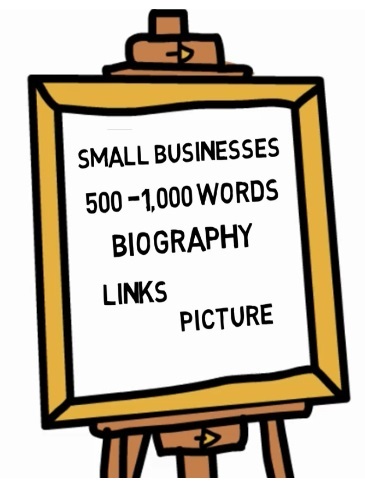
Read about what makes a good pitch HERE.
Apaid post is $30/£20 (Via PayPal) for a ‘DoFollow’ link and to cover the cost of my time.
Guest contributors, on the other hand, I consider on a case by case basis, for a fair exchange, or if I have invited the guest to contribute.
For instant updates when I publish a new blog post, Follow me on Bloglovin’
For extra goodies and exclusive new information, join my mailing list HERE.
I only send a newsletter monthly so I won’t spam you, I promise!
The post Waiting To Land Your First Paid Gig – A Guest Post appeared first on Amy Morse.
May 29, 2018
Embrace The Story Instinct
Story Time…
Walking along my local high street, I was held up behind a woman, holding the hand of a little girl. A girl of perhaps 3 or 4 (it was a school day, so I’m assuming she was pre-school age).
It’s a narrow stretch of pavement, and it was a sunny day, so I was content to amble along at half my usual walking speed.
I inadvertently eavesdropped on their conversation.
I’m using a little artistic licence here (hey, I’m an author, you should expect nothing less!)…
The woman said, “So, you went all the way to Spain without me?”
(At this point I assumed the woman was a relative or childminder rather than her mum!)
“Yeah, and one time, I went in this really big swimming pool. And there were loads of people in it. And the sun was really warm. I made a friend – she was called Molly – and we were playing. Then there was this big boy and he was with some other boys. They were being all splashy and Molly got upset. So, my mummy came over and told the boys they were naughty, so they went away, and my friend was happy again.”
They crossed the road and I picked up the pace to continue on my way, but it made me think.
This little girl, who probably hadn’t even started her formal education yet, already understood the basic concept of a story.
Instinctively.
Basic Concept of a Story
The recounting of events in a narrative context.
We all live our lives as the central character in our own narratives. (Tweet This)
A complete narrative has structure and conflict. Here is the basic formula for a story:
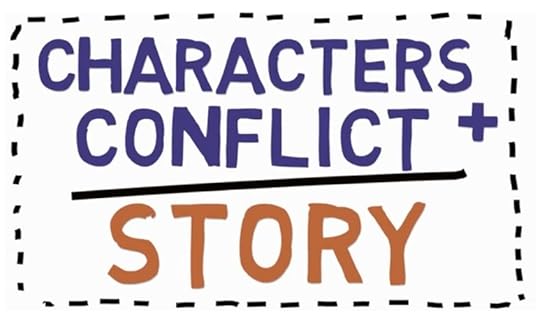
Isn’t it therefore fair to say, all of us are born with the basic concept of what a story is?
Like the innocence and natural curiosity we are born with, our circumstances often teach us to ‘unlearn’ things, to conform with the expectations of others around us.
Molly’s new friend told a complete story.
She followed the ‘Story Arc’, with a beginning, a middle, and an end. Heroes and villains and a happy ending. And all in less than 100 words! What a legend!
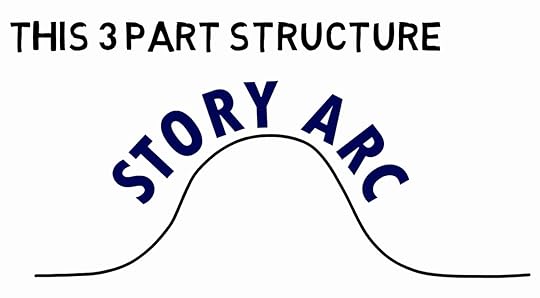
Beginning:
She set the scene (playing in a big swimming pool in the sun) and introduced the characters (herself and Molly). Building the stakes and tension – where is she going with this?
Middle:
There’s conflict (the big splashy boys) and a hero comes to the rescue (Molly’s friend’s mum). The stakes are at their highest – what will happen next?
End:
The hero saves the day, the tension melts away and we breathe a sigh of relief when Molly and her friend live happily ever after…
What does this mean for your blogs?
If you have unlearned something you can relearn it!
Because we all have a natural instinct for storytelling, even if you don’t even realise it, trust me you do. What about when you tell your friend an amusing anecdote? Or share something funny or sad that happened to you with someone? Those are all stories.
We talk in stories, we can absolutely write them into our blogs!
A Little More?
Take a look at the Slide Share for my keynote talk on Storytelling for Business, delivered across the Women Mean Biz and We Mean Biz networks in 2017/18.
These slides are packed with tips to bring more story structure into your blogs.
Storytelling for Business from Amy Morse
Tell me in the comments, what do you think makes a good story?
The post Embrace The Story Instinct appeared first on Amy Morse.
May 23, 2018
Why Unsubscribes Don’t Worry Me
Do you worry when you get unsubscribes from your newsletter?
On 25th May 2018, new legislation comes into force ensuring that businesses behave responsibly with people’s data.
One aspect of the GDPR (General Data Protection Regulations) regs switches the emphasis so subscribers must agree to be on a mailing list and be able to easily unsubscribe, rather than unsubscribes alone being enough.
It’s, of course, more complex than that, but you get the gist of it.
If you’ve not heard those initials ‘GDPR’ in the past few months, firstly, where have you been? and secondly, don’t panic!
Why?
The reason I’m not panicking is because I’m actually quite excited about it. I know, I’m a freak, right?
When I first started sending out a monthly newsletter, I set up Mailchimp to notify me instantly of any unsubscribes.
Whenever one pinged up in my inbox, I’d drop everything to find out who had ‘betrayed me’ (I feel foolish admitting that now!)
Rejection Hurts
In the early days of your business, you’re so sensitive to anything you can consider as a mishap. Or worse still, a failure, or rejection.
It all feels so personal and raw.
You’ve worked so hard. Shed many a drop of blood, sweat and tears, only to get that horrible rejection email glaring at you from your inbox.
When I clicked through, however, most of the time it was someone I’d not heard from since that initial sign up and had hardly opened the messages, let alone followed any action steps in them.
It Takes Time
After a time, it dawns on you. Not everyone is right for you and vice versa and that’s absolutely fine.
Why waste time communicating with someone who doesn’t want to hear what you have to say?
Surely, it’s better to focus your energies on the people that do want to hear from you and are interested in being in the conversation?
Quality over quantity, every time.
Moving Forward with purpose
This is why I’m excited about GDPR. Finally, I can spring clean my list and only spend my time and energy on the people I can help, those that like my blogs, like my style and like hearing from me.
Now doesn’t that feel so much better?

For instant updates when I publish a new blog post, Follow me on Bloglovin’
The post Why Unsubscribes Don’t Worry Me appeared first on Amy Morse.
May 22, 2018
Fresh Productivity Tips – A Guest Blog
I’m always open to hosting other writers on this blog.
My submission guidelines are simple:

Read about what makes a good pitch HERE.
I ask $30/£20 (Via PayPal) for a ‘DoFollow’ link and to cover the cost of my time.
Guest contributors, on the other hand, I consider on a case by case basis, for a fair exchange, or if I have invited the guest to contribute.
When Ashley Lipman contacted me about being featured on ‘The Blog Frog’ blog, I was happy to get involved and take a guest post from him.
Here are Ashley’s productivity tips…
Fresh Productivity Tips That Can Change Your 2018

Photo credit: Pixabay
A few months ago, people around the world made “New Year’s Resolutions.” Statistics show us that by the month of February, about 40% of people who made resolutions have given them up. In fact, before the year is over, 92% of people will have failed.
Here are a few reasons why this is true:
The resolution is unrealistic
Instead of make a resolution to eat better and exercise more, people will resolve to lose 50 or 60 pounds by Christmas. It is not realistic to think you can lose a massive amount of weight in a 12 month period without risking your health. Since the weightloss is intended to make you healthier, this is self-defeating and easily given up.
The resolution is beyond your abilities
This may sound silly, but in fact, it happens all the time. For example, someone resolves to write a book. But, they have no writing skills. Someone may resolve to climb Mt. Everest, but their climbing skills are limited to local mountain trails. Perhaps your resolution was to open your own business. Unless you have been preparing for this and have the background, connections, and finances it will take, the resolution is simply beyond your grasp at this current moment.
You were not willing to change
This happens more often than you would think. A person is unwilling to address that the methods they use (no matter how sound) are ineffective against the problem they face. Their resolve is not to change the way they do things, but to work harder and try to do more of what they are already doing.
So, how can you become more productive?
Becoming more productive is very closely related to becoming more efficient. It simply means doing things in a way that gives you the best results in the alloted time. You must create your own roadmap to productivity. But let us give you some tips to get you pointed in the right direction.

Photo credit: Pixabay
Route to Productivity
Throw away the myth that you are a great multi-tasker
There is no such thing as a multitasker. This is a label created when businesses had to ask fewer people to do more jobs. The simple fact is this. You can do a lot of things well. But you cannot to anything best, unless you give it undivided attention. You may be better than anyone else in your office. But, you are not the best you can be at anything if you are trying to do several things at once. Schedule time for each duty and focus only on that. You will be more productive, and your work will be better quality.
Pay attention to what you put in your body
Stop getting your nutritional information from television commercials. Learn some basic facts. You need fresh food and water. Nature provides us with a host of foods and drinks that are healthy and give us what we need. There are natural products that give us energy and pep, long-term strength, and that stimulate the body and brain.
Coffee is a perfect example. Coffee helps maintain a healthy heart, guards against certain cancers, Type II Diabetes, Parkinson’s Disease and gives you energy and mental sharpness. But, you should drink a high quality coffee such as the coffee found here: https://www.homegrounds.co/best-coffee-beans-bucket-list/. You would not dip your cup into a bucket of water that has been sitting in the breakroom all day. Why would you drink coffee that you know nothing about?
Be smart enough to know what you don’t know
In this age of technology, where everyone has a smartphone, computer, and the internet, why would you insist on making your life harder? Explore apps that can easily do things that you find difficult. If you are really bad at tracking jobs and work crews, find an app that will do it for you. If your projects are continually breaking the budget, find an app or software that will watch the details. You will learn why you are going over budget and can correct it.
There are many ways to increase your productivity in 2018. They are near as your computer and as vast as your mind will take you. If you want to be the best, use the best tools.
Thank you to Ashley for contributing. If you are an influencer with a lot to blog about, check out The Blog Frog
Talk to me about promotions and features on this blog, HERE
For instant updates when I publish a new blog post, Follow me on Bloglovin’
For extra goodies and exclusive new information, join my mailing list HERE.
I only send a newsletter monthly so I won’t spam you, I promise!
The post Fresh Productivity Tips – A Guest Blog appeared first on Amy Morse.
May 21, 2018
Why Online Workshops?
You never really just write a blog once.
As soon as your words are online and in the public domain you can use them to grow your business.
I’ve written previously about how to repurpose and recycle your blog content, both online and in the real world.
When I started my first blog in 2013, I wasn’t doing it to make money, or indeed, had I considered that I could! But over time, I came to realise that information has value.
You can keep adding value to it, and therefore make money from it.
My blog istelf was never supposed to be a business, yet I regularly receive offers from companies wanting to post on my blog and pay me to do it!
My business has grown (not through design, in the early stages at least) from a foundation of blogging.

The knowledge and expertise you bring has hidden value, the true worth of your business is often in your head because that’s where the potential is locked away. Until you get it out of your head, it’s worthless, but once you have, the possibilities are staggering!
Blogging allows you to tease out those strands of wisdom, and weave them into wonderful words. They in turn can be cut, shaped, stitched, and sold as information products your customers will love.
I started with a blog.
Then I turned that into my Blogging for Business Book.
I use my blog as a the basis for talks and workshops.
At each stage I’m giving more, learning more, helping more, reaching more businesses.
Turning that information into Online Workshops was a natural progression.
Starting My Online Workshops
It’s taken much longer than I expected!
My first attempts were shoddy.
Without decent cameras or audio equipment, my first few slides looked awful!
Then my Technical Director (that’s the oficial title I give to my husband who helps me out in my Learn To Love Your Words business!) found out about Video Scribe whiteboard animation software.
I wanted my online workshops to capture the feel of a real world workshop, where I’m a big fan of flipchart delivery. This software has done the trick. I invested in a good quality microphone and the software and got to work.
As with the development of any workshop, there are stages a trainer goes through to plan and design the learning to make it engaging and so it appeals to the main learning styles – VARK (Visual Audio Reading/Writing Kinaesthetic).
That means having a good mix of informtion and activities, presented in different ways, and a clear outcome for each stage of the learning.
Here are the eight stages I went through to develop my online workshop:
1) Know the audience
Everything in business starts with knowing who you are doing it for and how it will benefit them.

2) Decide on a topic
In my case, it’s ‘Blogging for Business’.
I want to take my learners on a journey through the different stages of developing a blog to benefit their business. And allow learners at different levels to join at the stage that’s right for them.
3) Break it down into stages
Take learners step by step.
Guide them and structure the way they progress to make sure they deepen their understanding of the subject and are not overwhelmed with too much information.
Learners are much more likely to make progress in bite-sized chunks than in a big dump of information.
4) Plan Content
What are the steps and what order should they be in?

5) Design Online Delivery Method
How will your deliver the information?
Through videos? webinars? Emails? Conference calls?
This will depend on what you want to deliver, what resources you have and what will work for your audeince.
6) Write Content
Script your videos, talks etc. first to ensure you don’t miss anything out and you deliver the appropriate content at the appropriate time.
Your blogs are a great resource to find those juicy nuggets and soundbites!

7) Write Activities and Exercises
A workshop needs to be interactive.
The learners need to do something to embed the learning (otherwsie it’s just a lecture and not a workshop).
There needs to be a challange and there needs to be a tangible outcome from mastering that challenge.
8) Build It
I researched a few platforms and decided on Teachable in the end.
It seemed the simplest (trust me, it needs to be idiot proof when it comes to platforms and software for me!)
9) Deliver It
I decided on a delivery method mixing a choice of online workshops with some 1 to 1 time with me – (Ask me about Skills Sessions.)
Or, commit to 6 months of mentoring with me and work through all 10 of the workshops – (ask me about Influencer Sessions.)
The first stage is to identify where your blogging barriers are and take the next step to tackling them is a FREE 30 minute Clarity Session.
Your Turn!
Have you got an online workshop in you? Tell us in the comments.
Book in for a FREE webinar and start learning how being a better writer can build you a better business.
GET MY WEBINAR TICKET
The post Why Online Workshops? appeared first on Amy Morse.
May 17, 2018
It’s So In-Tense!
How does the tense you use change your writing?
As a wordsmith, I find language a fascinating subject.
If I had a super power, I’d want to speak every language.
I happen to have been born in the UK (Wales, in fact), to English parents, so I was raised speaking English (apparently I could also understand Welsh as a toddler, but I’ve forgotten it now!).
As a native speaker, we often don’t notice the nuances of the English language, we speak as we are taught and rarely need to learn the mechanics of the language – unless, for example, we are teaching it as a foreign language.
I did a TEFL course (Teaching English as a Foreign Language) a few years ago and came to realise that English is a messy language! It is also the language with the most words.
For anyone learning English for the first time, the tense and order of words can be confusing. It doesn’t seem to follow the logic of many other common languages.
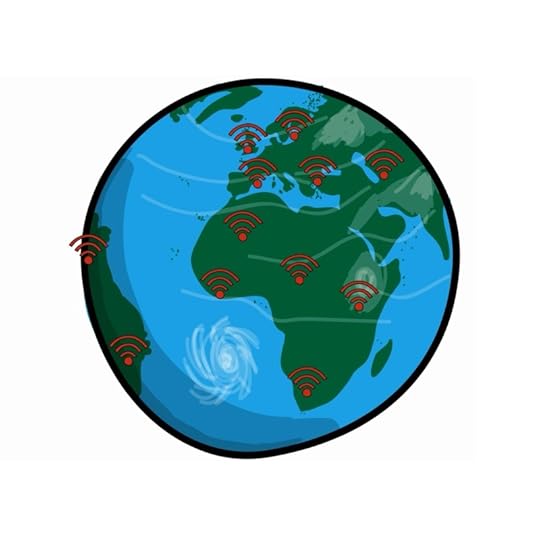 The nature of our place in the world means that throughout history our wet little island has been a melting pot of cultures. Through millennia of trading, invading forces (Roman, Viking…) and the British Empire as an occupying force, spreading its language and culture around the world.
The nature of our place in the world means that throughout history our wet little island has been a melting pot of cultures. Through millennia of trading, invading forces (Roman, Viking…) and the British Empire as an occupying force, spreading its language and culture around the world.
More Words Than Any Other Language
Consequently, we have adopted many words into our vocabulary. English has more words than any other language.
Entrepreneur. Rendezvous. Avatar. Tsunami. Mosquito. Tattoo. Hoi Polloi… to list but a few.
Versatile Language
English is, however, a versatile language.
It is less constrained by the rules of other languages, while at the same time having phrases, forms of words, silent letters and changing character sounds that seem to make no sense.
It features words that have many meanings, or double-entendre’s (to use another French word we’ve adopted!).
We have words like ‘knife’ (why the silent K?) and ‘gnome’ (why the silent G? If there is a rule here, surely it should be a silent K or G?).
A Spanish friend once asked me why ‘knife’ is spelled with a silent K, and the only answer I had was, “because English is a stupid language”!
Words Have Many Meanings
There are words spelled the same, yet pronounced differently like, ‘polish’ (as in, to buff a surface to a high sheen) and ‘Polish’ (the noun to describe a citizen of Poland).
Or ‘live’ (as in to exist) or ‘live’ (as in to broadcast in real-time).
In fact, is it ‘spelled’ or ‘spelt’? Both are correct. Spelt means to spell but it is also the name of a type of grain! (Confused, much?)
While at the same time, having phrases and sentences that still make sense, even when they are said in a different order in a sentence.
Think Master Yoda, who speaks with adjectives, verbs and nouns in a different order in the sentence, yet it’s still possible to understand him, because of the emphasis in the sentence.

Source: Pixabay
Such as:
“Powerful you have become, the dark side I sense in you.”
To be gramatically correct it should say:
"You have become powerful. I sense the dark side in you."
Both forms make sense and have the same meaning, but Yoda’s version sounds wise and thoughtful – rather than gramatically inconguent!
There are rules in English about the tense in which a verb (action word) is used and how this affects other words in the context of the sentence.
Tense in English
The English language is made up of a complex mix of tenses that native speakers use instinctively. We structure conversation using a combination of tenses that change the meaning, impact and action of the verb.
The tenses fall into three categories:
Past (already happened)
Present (happening right now)
Continuous (continuing to happen into the future)
If you want to convey something that has already happened, you would use a ‘past tense’. For example:
“I have been to the shop”
If you are communicating something happening right now you would use a ‘present tense’. For example:
“I go to the shop”
If you are communicating something that has started happening and is continuing to happen you will use ‘continuous’ tense i.e.: add ‘ing’ to the verb. For example:
“I am going to the shop”
How does this impact your blogs?
So, you’ve drafted a blog post.
You’ve let the words flow and you’re reviewing what you’ve written. Yet somehow, it feels a bit flat. It’s wordy or stodgy, the pace isn’t flowing. You just can’t identify why.
You’ve trimmed it, clipped it, cut and pasted bits and swapped it around, but it has no energy.
You’ve gone from feeling accomplished and satisfied for having written something, to being frustrated that you haven’t got it right.
What happened?
The tense you choose to write from changes the action, pace and impact of your writing. It can also affect the number of words in a sentence.
We inadvertently make our writing more passive by cluttering it with unnecessary words and mixing our tenses.
For example:
“I started to walk” or “I started walking”
Are you walking or not?
Say, “I walked” instead.
Just glancing at the words, you can see there are less of them.
This is a simple example of how playing with the tense can change the feel of the statement.
Fewer words. Shorter sentences.
This creates impact and speeds up the writing.
Long luxuriant, sentences, with lots of punctuation; such as commas, semicolons, dashes and conjunctions – like, and or, but – all add to the length of the sentence and ultimately the time it takes the reader’s brains to process all the components of that sentence and make sense of all those superfluous words and all that punctuation.
See what I did there? Did you feel that?
I used two sentences of just two words…
Short.
Sharp.
Boom.
I then used a long, rambling sentence with lots of words.
Did you feel yourself speeding up and slowing down?

I also repeated the word ‘all’ in the longer sentence and added lots of punctuation.
Were you exhausted after reading that long sentence? It was a lot to process.
The best writing says a lot with few words.

(Tweet This)
6 Questions to Ask When Editing Your Writing
Here are 6 questions to ask when editing your writing, to make it less ‘in-tense’ (how’s that for a double-entendre):
Can you change the tense to shorten the sentence?
Do you want to slow down or speed up the reader?
Have you repeated the same word in a sentence or paragraph?
Are you making several different statements in a long sentence that could be broken up?
Can you remove any conjunctions and commas and split a statement into multiple sentences?
Are you using common superfluous words? (for example: That. Very. Really. Some. Are all words we clutter our writing with that we don’t always need.) For a list of more superfluous words, look back on this previous blog post.
Great businesses start with great writing, because if you can’t communicate what you do to a stranger, how will you communicate it to your customers?
If you don’t tell people about what you do, how will they ever know?
“The success of every business depends on its ability to communicate with clarity.” (Tweet This)
How can you improve your writing to grow your business?
Need More?
Skills Sessions allow you to tackle the big barrier that’s hurting your blog, right now.
Book in for a FREE 30 minute Clarity Session and let’s dig into how you can improve your writing to grow your business.
The post It’s So In-Tense! appeared first on Amy Morse.

